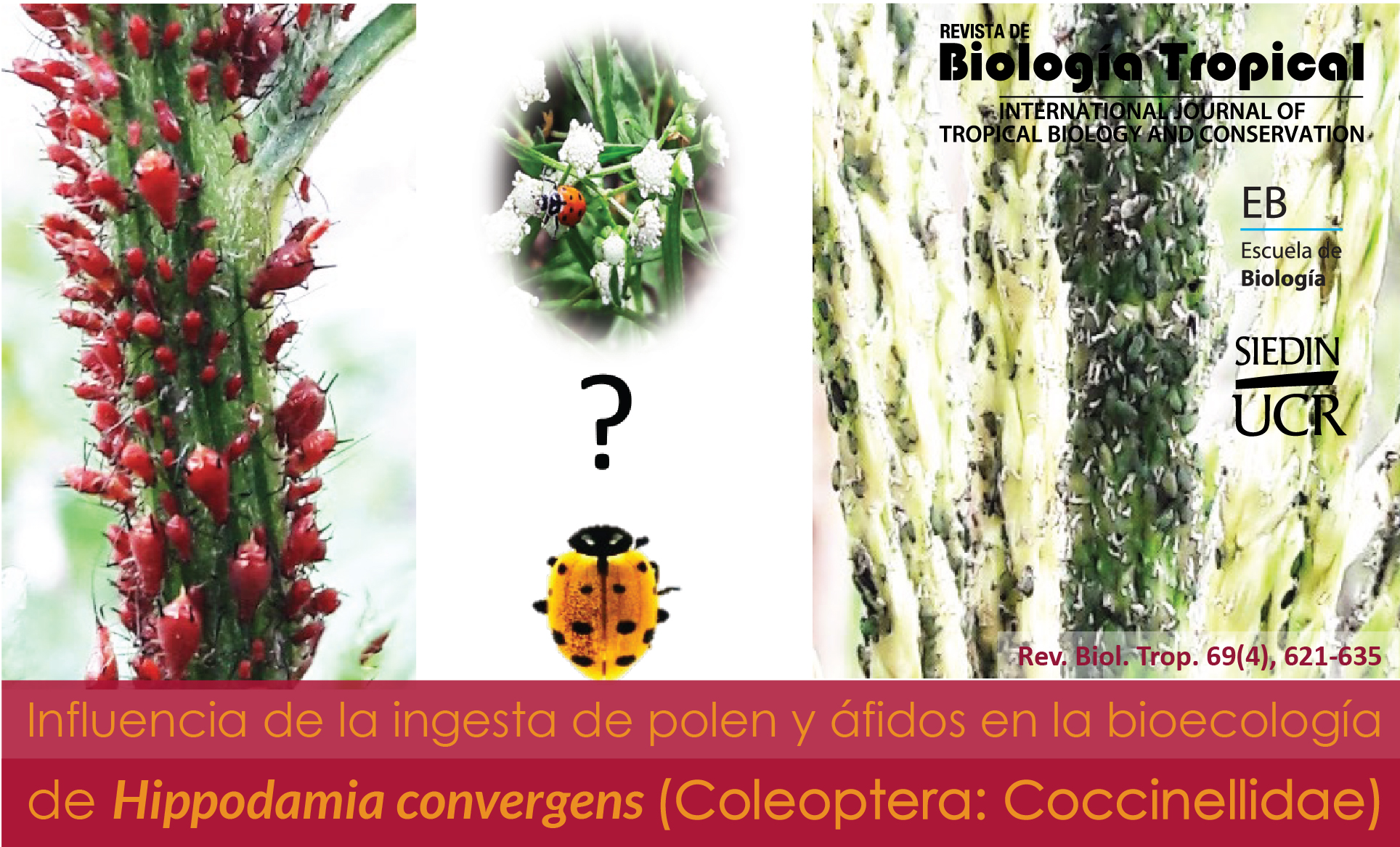Abstract
Introduction: Keeping populations of predatory insects in the agroecosystem by offering them prey, as well as food resources from plants, is important for enhancing conservation biological control. Objective: To determine if the consumption of prey and floral food resources enhances the biological attributes of the predator Hippodamia convergens. Methods: We fed the beetle larvae two species of aphids; and the adults were fed aphids, maize tassels, and two non-cultivated plant species. We checked gut sugar in the predator by the cold anthrone test and pollen presence by the acetolysis method. Demographic experiments were done in the first 40 days after female emergence, under controlled conditions (25 °C ± 0.5; 75 % ± 1.75 Relative Humidity; Light 12 h: Darkness 12 h). Results: H. convergens did not consume fructose, but only pollen from Sorghum halepense, Parthenium hysterophorus or Zea mays. Developmental time (egg-adult) of the predator was shorter (21.4 days) when it consumed Rhopalosiphum maidis than Uroleucon nigrotibium (24.6 days); survival (L1-adult) and sex ratio did not change. Average fecundity was higher (55.5 eggs / 40 days) when consuming U. nigrotibium with pollen from P. hysterophorus, than U. nigrotibium (22.5 eggs / 40 days) or R. maidis with pollen from Zea mays (11 eggs / 40 days). The intrinsic rate of natural growth was higher when consuming U. nigrotibium with pollen from P. hysterophorus (0.055), than U. nigrotibium (0.034) or R. maidis with pollen from Z. mays (0.019). Predation rate (L1-L5) was higher when consuming R. maidis (0.65) than U. nigrotibium (0.51). Conclusions: Aphid prey species and its combination with pollen from maize and non-cultivated plants affected development time, reproduction, and predation rate of H. convergens.
##plugins.facebook.comentarios##

This work is licensed under a Creative Commons Attribution 4.0 International License.
Copyright (c) 2022 Revista de Biología Tropical







